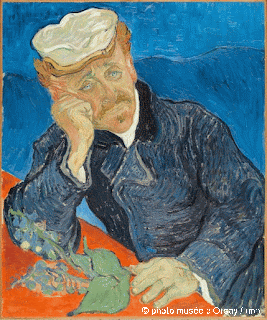 |
| Robert-Fluery's 'Last Days of Corinth', Musée d'Orsay |
This post begins a four-part series written last autumn during New Zealander's Judge Tompkins sojourn to present papers at an Interpol DNA conference in Lyon. Consider it a warm-up to the ARCA blog traveling to Paris next week.
By Judge Arthur Tompkins
Friday morning the 1st of November, my first day in Paris on this trip, dawned under leaden skies drizzly rain and a cold-ish breeze. Undaunted, and drawing inspiration from the Woody Allen movie, Midnight in Paris, in which the character Gil, played by Owen Wilson, enthuses, “Can you picture how drop dead gorgeous this city is in the rain?”, I set out on a carefully chosen Velib bike from the stand up the street, for an early morning ride around central Paris, in search both of nostalgic sights, and coffee.
My route took me across to and up the middle of Il St Louis, over to Il de la Cite (where there is a huge temporary grandstand in front of Notre Dame, apparently part of the 850 year anniversary commemorations of the cathedral – but it does somewhat spoil one of the great views in Paris, that of a deserted front of Notre Dame as the sun rises), and then across to the Left Bank and along the riverside.
My progress was punctuated by a horn being sounded and an admonitory gallic finger being waved at me by the uniformed driver of a police van, full of what looked liked dishevelled revellers who had crossed paths with the police that night and were being driven into the Conciergerie – although not to the same ultimate fate as an earlier sometime resident of that forbidding police station, Marie-Antoinette, I hoped – as I thought about, but did not, cross a pedestrian crossing on my bike against a red light right in front of his van.
I also managed two very satisfactory coffee stops, in corner cafes that were sleepily opening up in advance of the morning’s onslaught of workers and tourists.
 |
| Vincent van Gogh's "Portrait of Dr. Gachet" Musée d'Orsay, Paris |
I had decided to visit the Musée d'Orsay and then in the afternoon I planned to head to the Louvre. The former was achieved after a 30 minute wait in line, in the drizzly rain, and was as rewarding as ever. An unexpected highlight was turning a corner and coming face to face with Robert-Fluery’s ‘Last Days of Corinth’ – which my students from this year will undoubtedly remember that I used in my Art Crime course when discussing Rome’s sack of Corinth in 149BC, and also two in particular of the many Van Goghs. The first was a self-portrait sold by the Nazis in 1939 at the notorious degenerate art auction held at the Fischer Gallery in Switzerland; the second a version of the infamous Portrait of Dr Gachet, acquired by Goering and traded by him to a dealer in Amsterdam, from where it eventually ended up being purchased by a Japanese industrialist [the Musée d'Orsay's Portrait of Dr. Gachet entered the state collection in 1949].
After lunch, a drizzly walk across the Tuileries Gardens, with a small detour to pay homage to Rose Valland’s memorial plaque on the corner of the Jeu de Paume, took me to the Louvre. The vast queue at the main entrance was avoided by buying my ticket in the hidden-away Tabac store in the nearby underground shopping centre, and then using the priority entry lane, and a lovely three hours followed. Huge crowds were, as always, overlooking the largest stolen painting on public display anywhere in the world – Veronese’s "The Wedding at Cana" – by concentrating on the Mona Lisa on the opposite wall, and also largely ignoring the other da Vinci paintings in the Grand Gallery nearby, including his John the Baptist, supposedly da Vinci’s last painting, which was acquired by King Charles I but then sold to the French by Cromwell’s Commonwealth after Charles was executed.
My time in the Louvre was also marked by an entertaining vignette, which took place in front of Uccello’s Battle of Romano – one of three paintings that make up the series, the other two being in the Uffizi and London’s National Gallery. Seated on the bench in front of the painting, an American man was talking loudly and long on his cellphone, discussing for all to hear, and in some detail, the structuring of an investment “opportunity”, whilst his wife sat next to him, a look of increasing annoyance on her face, her body language speaking volumes of the way in which her husband was ruining the much-anticipated (by her) and expensive (to him, no doubt) visit to the Louvre. My guess is they had words later …
I also hunted out the Louvre’s two Vermeers, the Lacemaker and the Astronomer. The latter, reputedly Hitler’s favourite painting, was looted by the Nazis after the occupation of Paris from the Rothschilds and hung in the Jeu de Paume for inspected there by Herman Goering, but ultimately sent to Germany and intended as the centrepiece of Hitler’s Linz Museum. In the latter part of the war, after the Normandy landings, it was stored in the Aut Ausee saltmine, and rescued from there by American troops, as a result of the work done by the Monuments Men.

No comments:
Post a Comment